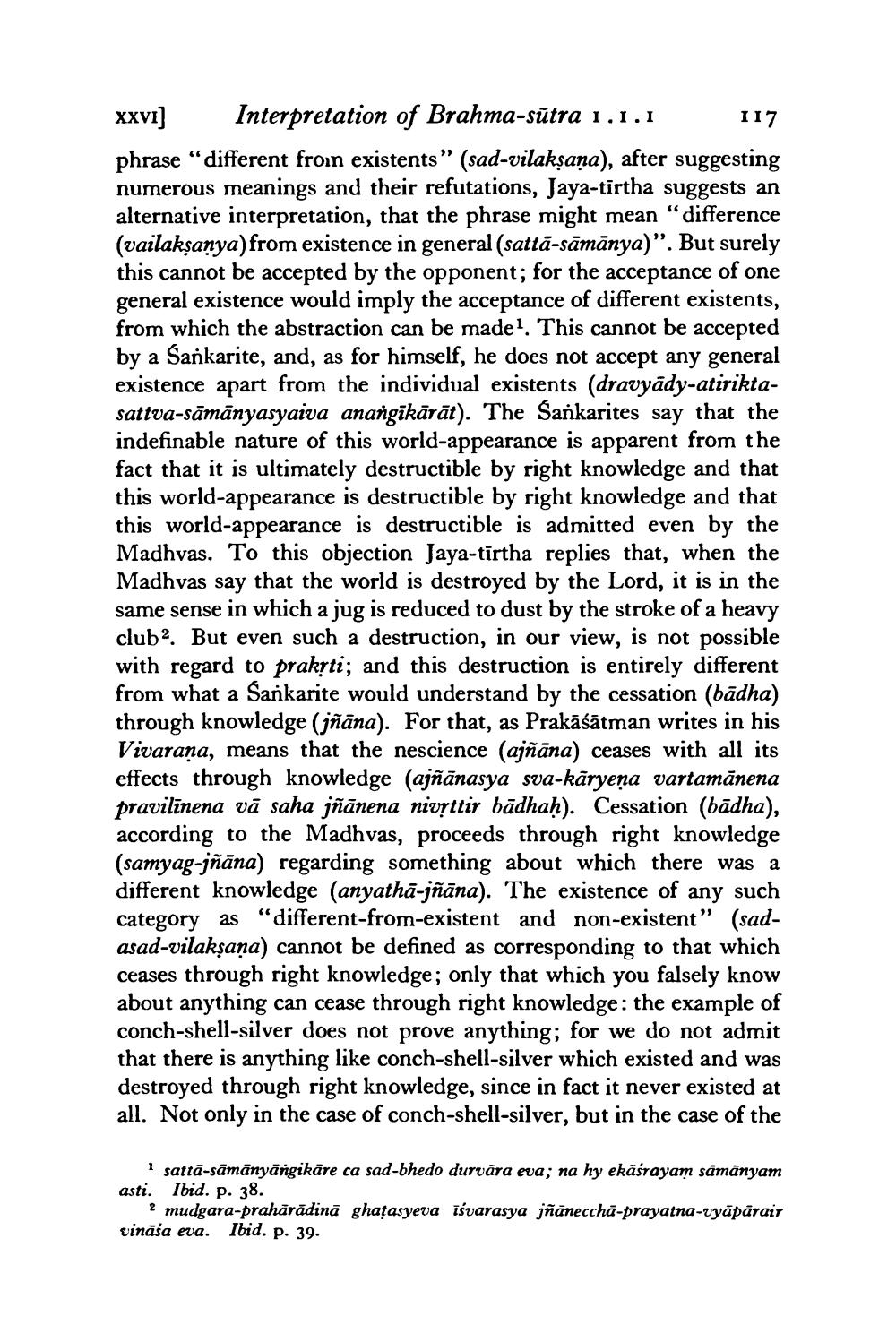________________
XXVI] Interpretation of Brahma-sūtra 1.1.1 117 phrase “different froin existents" (sad-vilakṣaṇa), after suggesting numerous meanings and their refutations, Jaya-tīrtha suggests an alternative interpretation, that the phrase might mean “difference (vailakșanya) from existence in general (sattā-sāmānya)”. But surely this cannot be accepted by the opponent; for the acceptance of one general existence would imply the acceptance of different existents, from which the abstraction can be made. This cannot be accepted by a Sankarite, and, as for himself, he does not accept any general existence apart from the individual existents (dravyādy-atiriktasattva-sāmānyasyaiva anangīkārāt). The Sankarites say that the indefinable nature of this world-appearance is apparent from the fact that it is ultimately destructible by right knowledge and that this world-appearance is destructible by right knowledge and that this world-appearance is destructible is admitted even by the Madhvas. To this objection Jaya-tīrtha replies that, when the Madhvas say that the world is destroyed by the Lord, it is in the same sense in which a jug is reduced to dust by the stroke of a heavy club2. But even such a destruction, in our view, is not possible with regard to prakrti; and this destruction is entirely different from what a Sankarite would understand by the cessation (bādha) through knowledge (jñāna). For that, as Prakāśātman writes in his Vivarana, means that the nescience (ajñāna) ceases with all its effects through knowledge (ajñānasya sva-kāryeņa vartamānena pravilīnena vā saha jñānena nivịttir bādhaḥ). Cessation (bādha), according to the Madhvas, proceeds through right knowledge (samyag-jñāna) regarding something about which there was a different knowledge (anyathā-jñāna). The existence of any such category as “different-from-existent and non-existent" (sadasad-vilaksana) cannot be defined as corresponding to that which ceases through right knowledge; only that which you falsely know about anything can cease through right knowledge: the example of conch-shell-silver does not prove anything; for we do not admit that there is anything like conch-shell-silver which existed and was destroyed through right knowledge, since in fact it never existed at all. Not only in the case of conch-shell-silver, but in the case of the
sattā-sāmānyāngikāre ca sad-bhedo durvāra eva; na hy ekāśrayam samānyam asti. Ibid. p. 38.
? mudgara-prahārādinā ghatasyeva īśvarasya jñānecchā-prayatna-vyāpārair vināśa eva. Ibid. p. 39.




